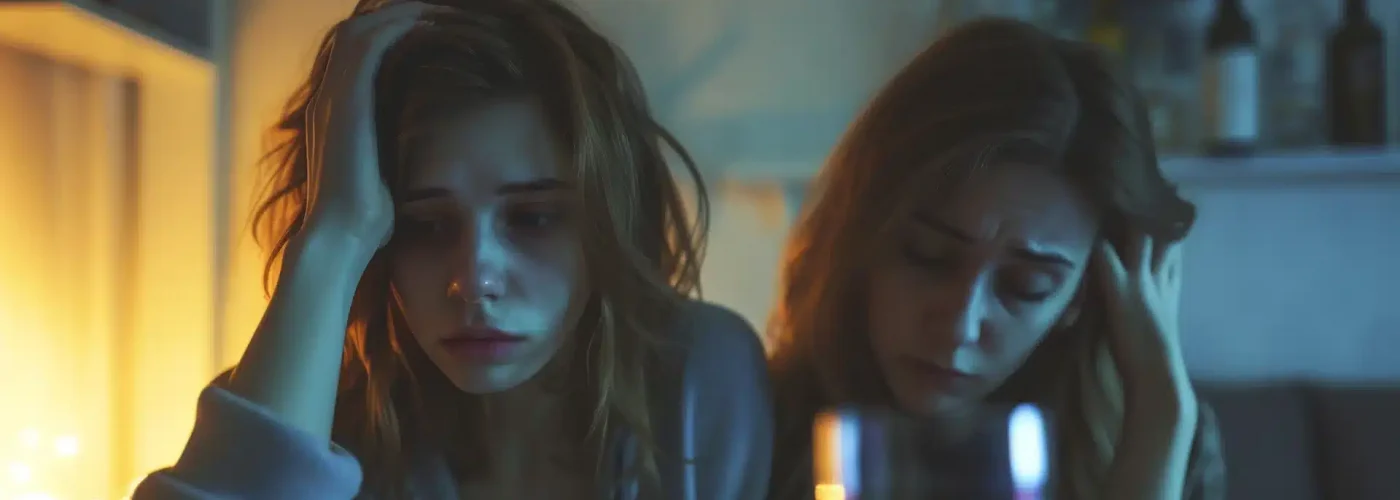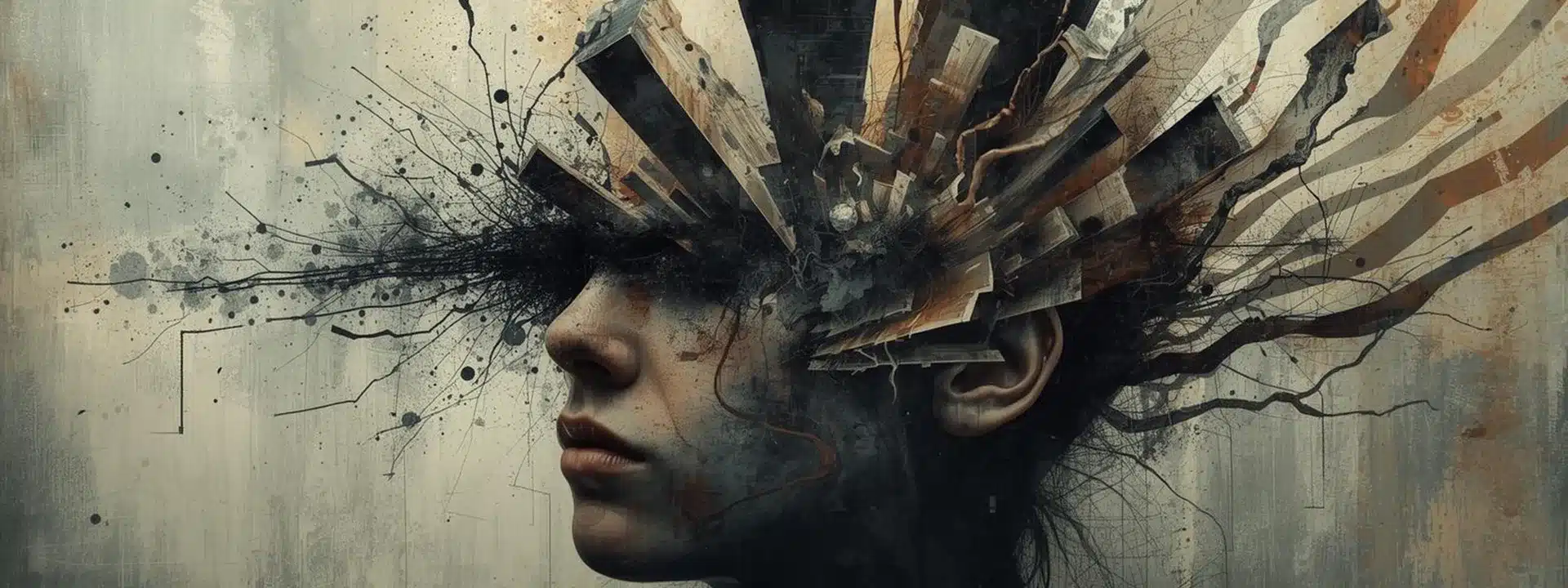There are many reasons why someone with borderline personality disorder might be diagnosed with bipolar disorder. In both cases, you might experience big emotions, sudden mood changes, and trouble keeping steady relationships.
If you find all of this confusing, you’re not alone.
The big difference between bipolar disorder and borderline personality disorder is duration. Bipolar disorder can appear suddenly, but it may take weeks or even months before the switch happens.
Quick changes in emotion identify borderline personality disorder. Sometimes, it takes only a couple of hours for someone to experience a dramatic shift in feelings.
The intensity of these mood swings can lead to confusion and sometimes even the wrong kind of treatment. This is why it’s important to know how both disorders present and to understand the differences between them.
Understanding Borderline Personality Disorder
Borderline Personality Disorder (BPD) is a mental health condition that makes it very hard for someone to control their emotions. This means you feel things very deeply and find it difficult to calm down when you’re upset.
Someone with BPD might worry about their partner leaving them, even if the partner has no such plans. This can create tension in relationships and friendships over things as small as not getting a text back. BPD is more than feeling hurt, angry, or scared—it’s often a result of childhood trauma, genetics, and growing up in a stressful or unsafe environment.
Some of the most common signs of BPD include:
- Changing your mood very quickly—switching between extreme happiness and sadness within a few hours.
- Having intense yet unstable friendships and relationships.
- Doing things without thinking them through (for example, maxing out your credit card in one night).
- Feeling unsure about who you are and what you want in life.
People with BPD need therapy because it helps them learn to manage their feelings and build healthy, lasting relationships.
Understanding Bipolar Disorder
Bipolar Disorder is a mental health condition that causes a person to swing between two very different emotional states. This is reflected in the high-energy phases and the low-energy phases. The mood changes are quite intense, which makes them different from what most people experience.
The “high” you experience is called mania or hypomania, and symptoms include:
- Feeling super energetic, happy, and full of life even when you haven’t slept.
- Talking very fast and having lots of ideas all at once.
- Spending too much money or taking risks you normally wouldn’t.
Then comes the “low,” which is called depression. Symptoms include:
- Feeling sad, tired, and hopeless for weeks on end.
- Losing interest in things that usually bring joy.
- Having trouble focusing or getting out of bed.
It’s important to note that there are different types of bipolar disorder:
- Bipolar I: Characterized by major mood swings, with very strong manic and depressive episodes.
- Bipolar II: Includes milder highs (called hypomania) and strong depressive episodes.
- Cyclothymic Disorder: Characterized by many ups and downs over time that are not as extreme as the other two types.
Bipolar disorder often runs in families and can be linked to chemical imbalances in the brain. There’s nothing you can do to prevent it, but with proper treatment, you can manage the condition and live a full, balanced life
What Are the Key Differences Between Borderline Personality Disorder and Bipolar Disorder?
While on the surface, there are many similarities between BPD and bipolar disorder, it’s important to know the difference.
Here’s how you can compare the two in simple terms:
| Feature | BPD | Bipolar Disorder (BD) |
| Mood Shifts | Mood can change within hours or even minutes. | Mood shifts over the course of weeks or months. |
| Main Triggers | Caused by emotional events or relationship problems (like feeling rejected or abandoned). | Caused by biological changes in the brain (like a chemical imbalance). |
| Relationships | It can be very intense and unstable. | Relationships usually stay more stable. |
| Treatment | Focuses mostly on therapy (like DBT) to manage emotions and relationships. | Usually needs medication + therapy to balance mood swings. |
| Examples | Someone might get very upset if a friend doesn’t text back. | Someone might go on a shopping spree or feel very down for weeks. |
Can You Have BPD and Bipolar Disorder?
Yes, it is possible to have both, and there’s a word for it: comorbidity. This means two conditions are happening at the same time, affecting a person’s emotions and mood.
Here’s how you can tell if someone has both BPD and BD:
- They have fast mood swings in a single day (BPD).
- They also have longer manic or depressive episodes that last for weeks (BD).
Having both conditions can be incredibly taxing on a person’s mental health and may require a mix of therapy and medication to manage. However, the most important step is getting a clear diagnosis to ensure the right care plan is prescribed.
Start Healing Today
The first step toward healing is getting the right diagnosis. From borderline personality disorder to bipolar disorder, at Alter Behavioral Health, we ensure that you not only get the right diagnosis but also receive the right treatment plan, support, and understanding.
We provide you with the tools to promote recovery and help you build a calm and balanced life.
If you’re ready to take control of your mental health, call us today and schedule a confidential assessment.
FAQs
1. What is the main difference between BPD and bipolar disorder?
BPD causes quick mood changes triggered by emotions or relationships, while bipolar disorder involves longer mood swings that last days or weeks.
2. Can someone have both BPD and bipolar disorder?
Yes. Some people experience symptoms of both, which can make diagnosis and treatment more complex.
3. How are BPD and bipolar disorder diagnosed?
A licensed mental health professional will review symptoms, personal history, and patterns of mood changes before making a diagnosis.
4. Do BPD and bipolar disorder have the same treatment?
Not exactly. BPD is usually treated with therapy (like DBT), while bipolar disorder often requires both treatment and medication.
5. Are BPD and bipolar disorder caused by trauma?
BPD is often linked to early life trauma or unstable relationships, while bipolar disorder is more connected to brain chemistry and genetics.
6. What are manic episodes in bipolar disorder?
A manic episode is a period of extreme energy, fast talking, and risky behavior that can last for days or longer.
7. How can therapy help with BPD?
Therapies like Dialectical Behavior Therapy (DBT) teach emotional control, coping skills, and ways to build healthier relationships.
8. Can BPD or bipolar disorder go away completely?
While there’s no quick cure, many people manage their symptoms well with consistent treatment and support.
9. Is medication needed for BPD?
Not always. Therapy is the main treatment, but medication may help with specific symptoms like anxiety or depression.
10. How can I get help if I think I have one of these conditions?
Reach out to a licensed therapist or clinic like Alter Behavioral Health for a professional evaluation and treatment plan.



